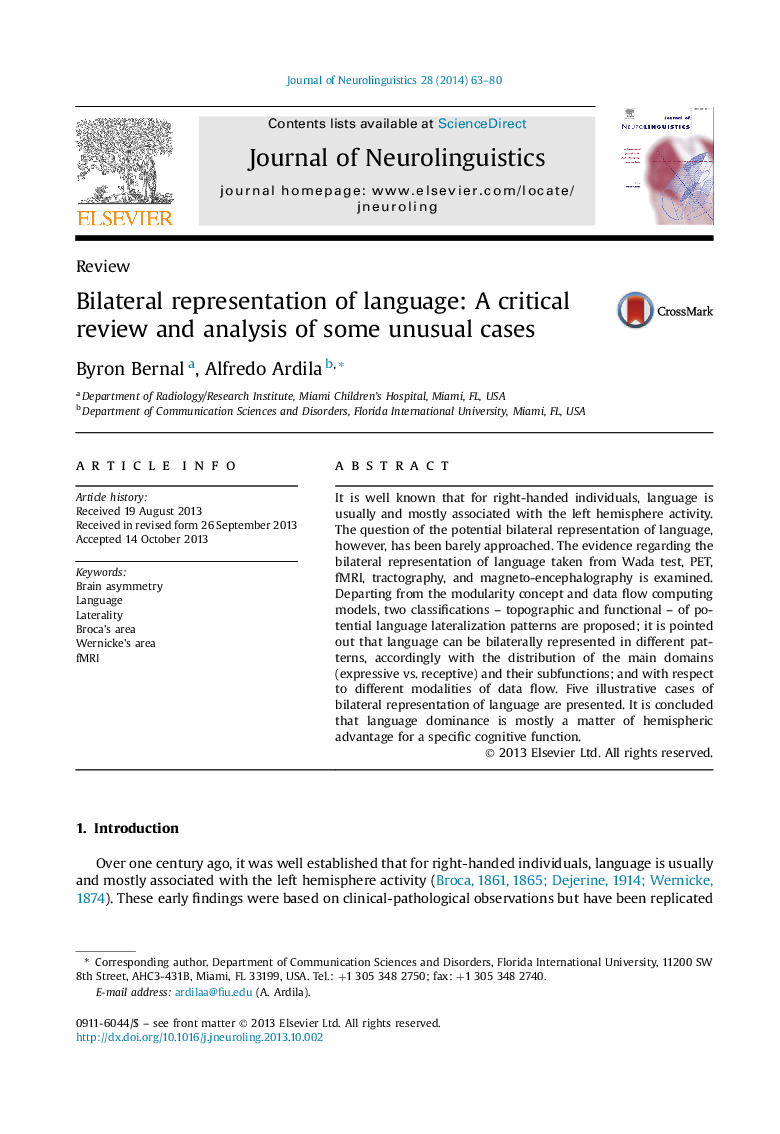| Article ID | Journal | Published Year | Pages | File Type |
|---|---|---|---|---|
| 911804 | Journal of Neurolinguistics | 2014 | 18 Pages |
•Language is usually and mostly associated with the left hemisphere activity.•There is diverse evidence of potential bilateral representation of language.•Two classifications of language lateralization patterns can be suggested.
It is well known that for right-handed individuals, language is usually and mostly associated with the left hemisphere activity. The question of the potential bilateral representation of language, however, has been barely approached. The evidence regarding the bilateral representation of language taken from Wada test, PET, fMRI, tractography, and magneto-encephalography is examined. Departing from the modularity concept and data flow computing models, two classifications – topographic and functional – of potential language lateralization patterns are proposed; it is pointed out that language can be bilaterally represented in different patterns, accordingly with the distribution of the main domains (expressive vs. receptive) and their subfunctions; and with respect to different modalities of data flow. Five illustrative cases of bilateral representation of language are presented. It is concluded that language dominance is mostly a matter of hemispheric advantage for a specific cognitive function.
Graphical abstractFigure optionsDownload full-size imageDownload as PowerPoint slide
